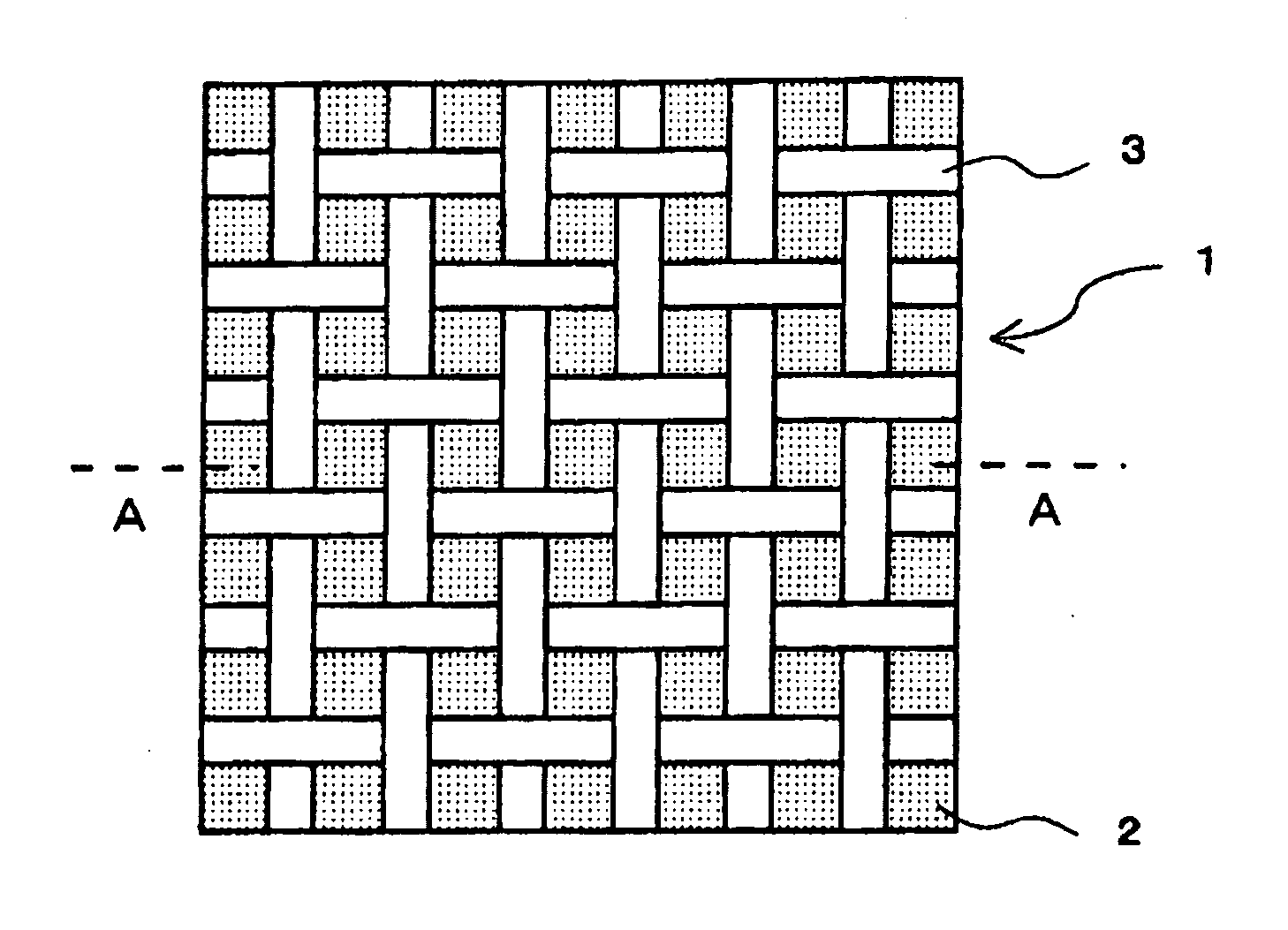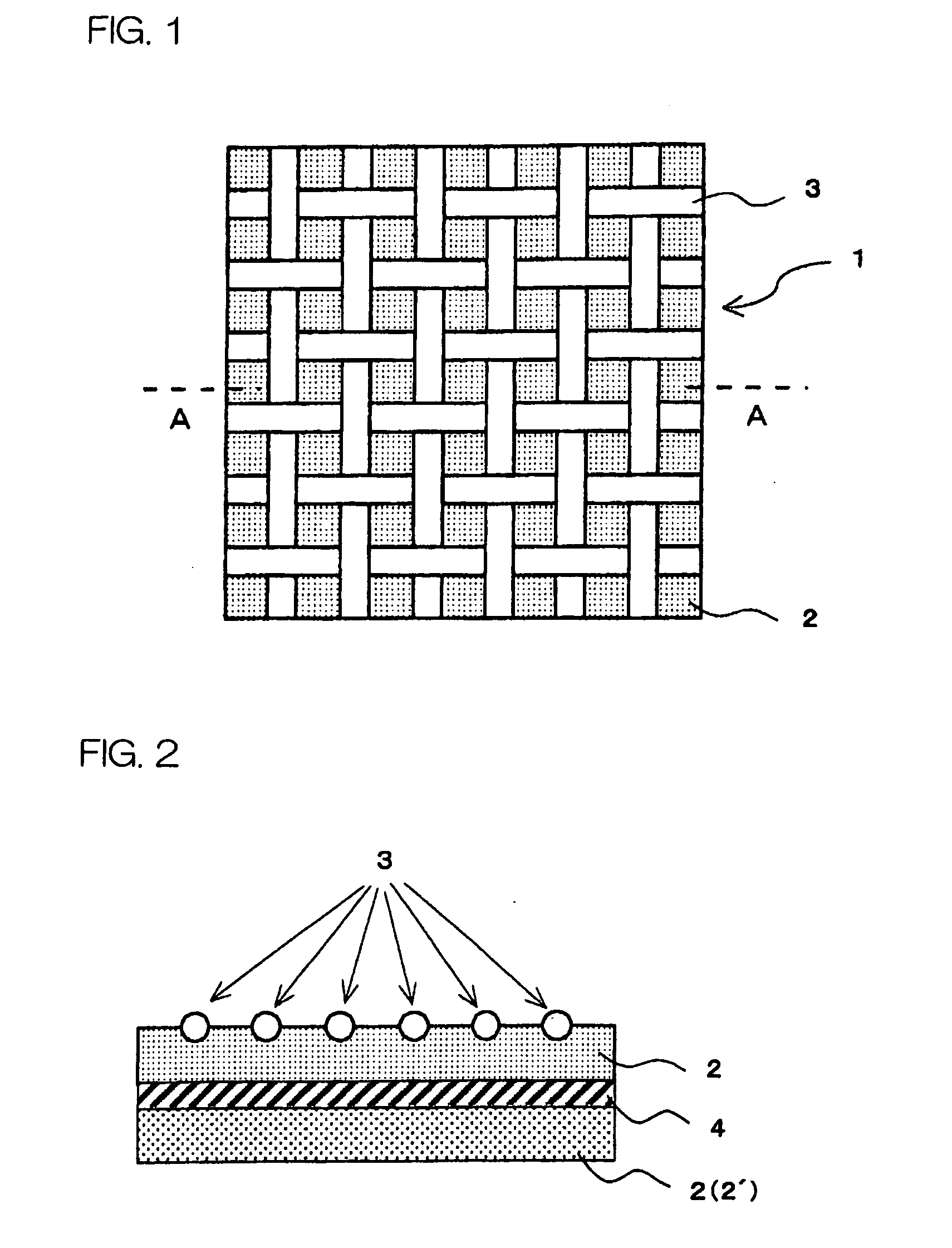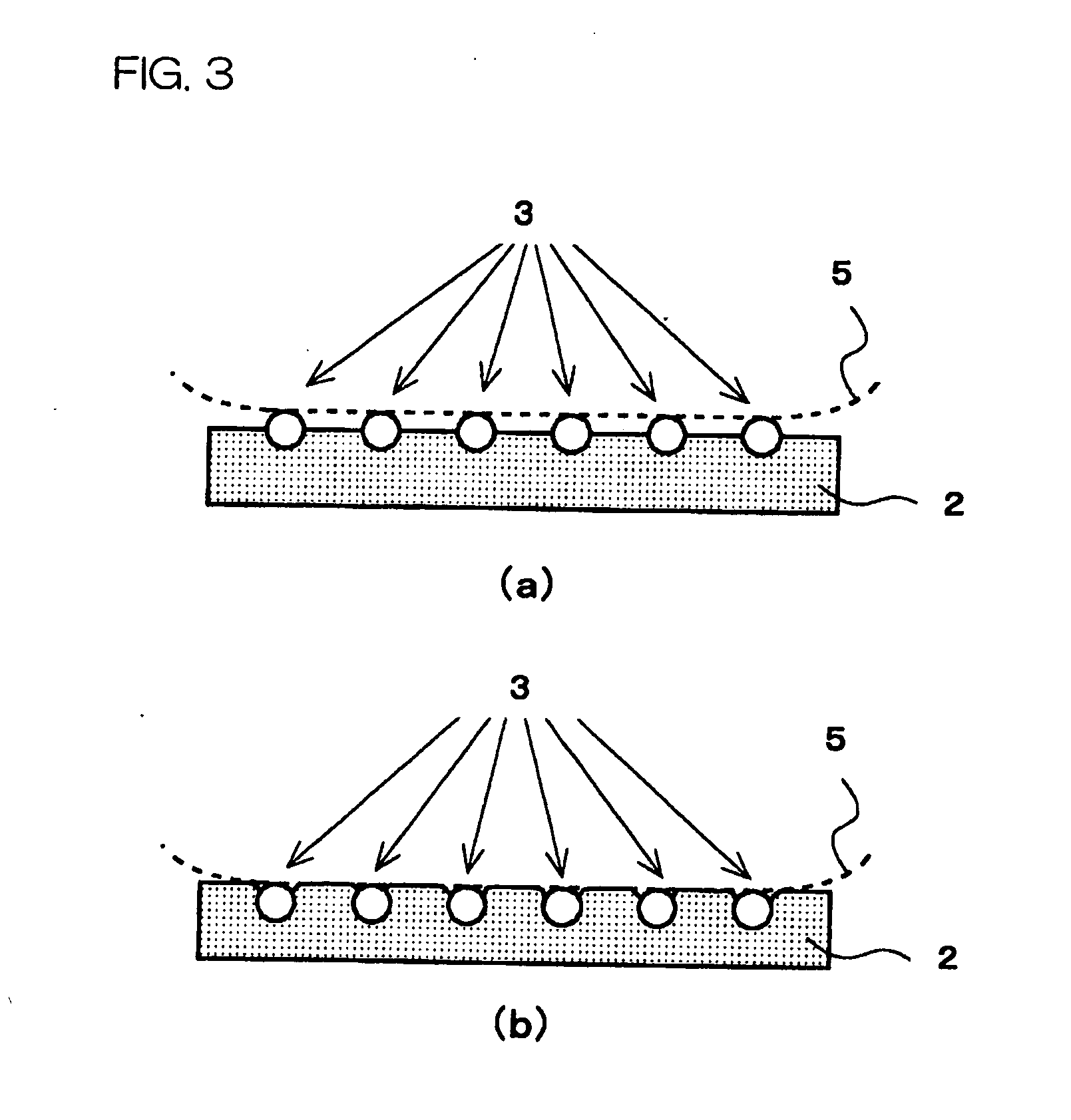Adhesive seal material for end portion of solar cell panel, sealed structure of end portion of solar cell panel, sealing method, solar cell module, and producing method thereof
a technology of solar cell panels and sealing materials, which is applied in the direction of film/foil adhesives, film/foil adhesives without carriers, pv power plants, etc., can solve the problems of low workability, difficult to set the amount of sealing materials to be packed, and deterioration of etc., to achieve excellent water vapor barrier properties, reliably seal the end portion, and high workability
- Summary
- Abstract
- Description
- Claims
- Application Information
AI Technical Summary
Benefits of technology
Problems solved by technology
Method used
Image
Examples
example 1
[0140]The released sheet laminated on the top surface of the first adhesive layer of the rubber-based adhesive layer 1 obtained by the foregoing process was peeled therefrom and, using a quadriaxial laminator, the porous screen A was bonded as a non-adhesive layer to the top surface of the first adhesive layer under a pressure of 0.2 MPa such that the meshes of the net had uniform shapes to provide an adhesive seal material for an end portion of a solar cell panel which had a rubber-based adhesive layer having one adhesive surface covered with the porous screen.
examples 2 to 6
[0141]Using the rubber-based adhesive layers 1 and 2 shown above each as a rubber-based adhesive layer and using the porous screens A to C shown above each as a porous screen, adhesive seal materials each for an end portion of a solar cell panel were obtained in the combinations shown in Table 1 in the same manner as in Example 1.
PUM
| Property | Measurement | Unit |
|---|---|---|
| size | aaaaa | aaaaa |
| softening point | aaaaa | aaaaa |
| softening point | aaaaa | aaaaa |
Abstract
Description
Claims
Application Information
 Login to View More
Login to View More - R&D
- Intellectual Property
- Life Sciences
- Materials
- Tech Scout
- Unparalleled Data Quality
- Higher Quality Content
- 60% Fewer Hallucinations
Browse by: Latest US Patents, China's latest patents, Technical Efficacy Thesaurus, Application Domain, Technology Topic, Popular Technical Reports.
© 2025 PatSnap. All rights reserved.Legal|Privacy policy|Modern Slavery Act Transparency Statement|Sitemap|About US| Contact US: help@patsnap.com



